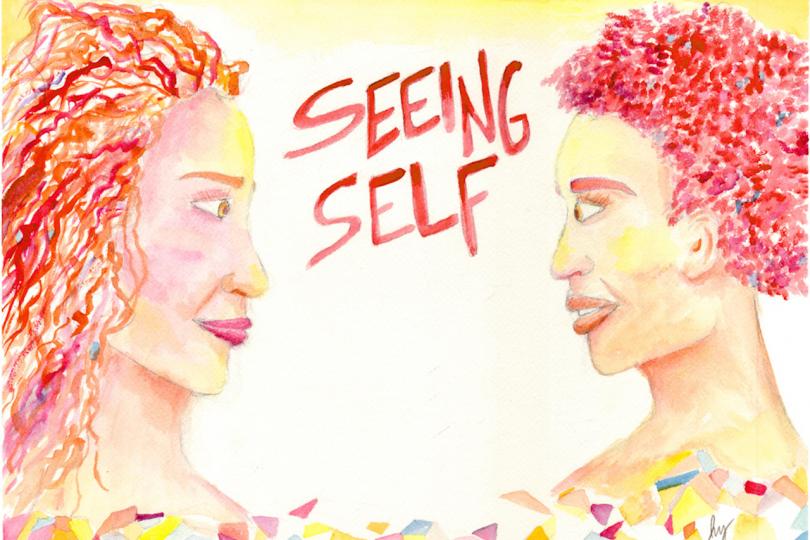Day 3: Talking About Representation

Editor’s Note: For every day of the Fringe, a different writer will provide a kind of tour of their experience that day. More travelogue than criticism, you can find a new essay by noon each day and catch up on the whole package here.
I was recently at a conference in Washington DC and was approached by a fellow theater professional involved with One Large, a project aimed at disrupting the system of economic injustice by increasing the flow of money through black-owned businesses. I was handed a $10 bill under the condition that it is spent at a black-owned business within two weeks. I agreed, brought the $10 bill back to Minnesota and quickly realized how difficult this task is. Living in Saint Paul and working in downtown Minneapolis, I couldn't find anything that was already part of my routine or easily accessible. I finally found a wonderful vendor at the farmer’s market and stocked my shelf with pickled watermelon rinds, but this exercise made me very aware of the limitations around me in terms of diversity and disrupting the systems that undercut people of color.
Since then, I have been making the extra effort it takes to make sure the money I spend continues to support people of color. This got me thinking about my own field and what I can do as an individual to support art and theater makers that represent a plurality of voices, as my boss says. So, on my first year as a Fringe attendee (yes, I'm embarrassed to confess) I decided to see shows that are created by people of color. Here's what I saw:
Seeing Self
I was so moved by this piece- a collection of stories talking about the meaning of empowerment and what makes one feel empowered. It explores relationships and how we interact with each other; how supporting others and helping them thrive is an empowering thing. Seeing Self has a lot of heart. It's the heart that aches when, as a gay person, you fall in love with someone who is straight. A heart that aches when you’re told your skin is too dark, your hair is too curly or you’re not skinny enough. But also, a heart that triumphs because of the beauty in each one of us, as unique as the pattern of a kaleidoscope. I didn’t have the chance to talk to the artists afterwards but I would love for them to know that, as a fluid woman of color, I felt empowered by what they offered on stage.
Oh snap! my alien children are trying to kill me
Oh snap! I cried. We need more of this: an honest and candid account of what it is like to be a black father, or better yet, a black daddy; the fears, the questions, the humor, the love. This piece has lots of funny moments, but also deep, heartfelt ones. They are woven in using rap and recordings of family members each telling us how they perceive their relationships with daddy, and sharing the sweetest moments of a parent watching their kid grow and discover the world. This work truly shows the full range of real life as a black family man. It hit really close to home. Don’t let me spoil it for you, just go see it.
Broken English, Mother Tongue.
Smart. Witty. Spot on. Another very honest piece, this time about the complexity of growing up in Puerto Rico while heavily influenced by American culture. Morillo recounts a number of personal stories and his parents’ trials and tribulations as a military family of color subjected to numerous deployments. He also shares with us the origins of his own sense of justice- his family's devestation over his mother’s sickness and misdiagnosis. Morillo has a lot of stories to tell. He doesn’t shy away from pointing out most people’s discomfort with his racial complexity and ambiguity, or from recalling the history of oppression between the US and the Island. You’ll be right there with him, not wanting to miss one beat.
What's the through line connecting the three shows? The strong role races plays in how we identify ourselves, based on both what feels familiar and also what's projected onto us by others; the very real limitations imposed by systems that are designed to oppress and mitigate entire populations. I was proud to see the variety of perspectives represented in only three shows, and I walked away wanting more. There are a few other shows created by people of color on this year’s Fringe roster and I’ll try to see all of them. I continue to ask myself, what else can I do to continue to support artists who look like me? What can we all do to increase the diversity of voices represented on stage and incentivize people of color to create their own work?
Your turn.
And more from the editor: And while you're here, please help us learn more about how you use MinnesotaPlaylist.com by filling out this quick 10 questions survey. It'll only take you 5 minutes but might improve your theater experience a lot.




